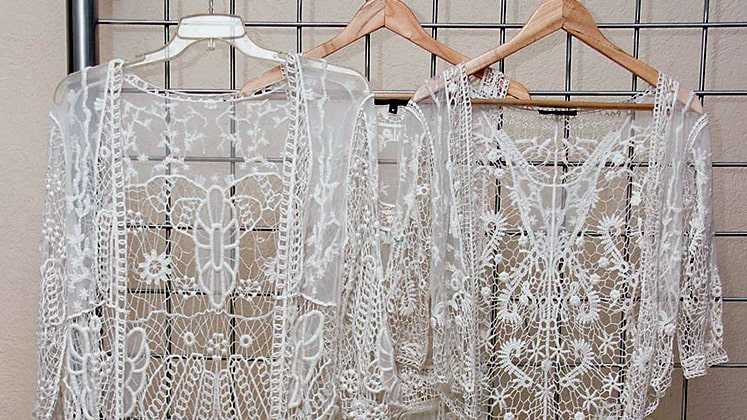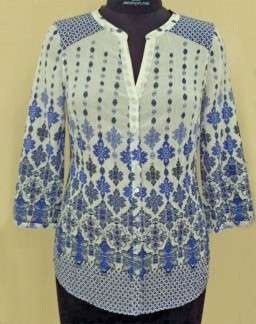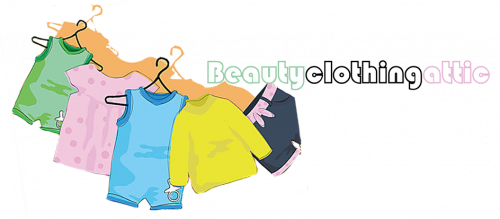
Over the time, buyers stopped coming to NCR for basic garments and the region became a hot spot for products adorning value addition, intricate detailing and flexibility in manufacturing. However, instead of easing the competition, it created a whole new circle of struggle, as everyone in the region was making similar products and the buyers were spoilt for choices. To fight such fierce competition, NCR exporters started to differentiate and develop some core strengths which became their USP for growing business. While some have already put the differentiations to test and come out victorious, others are still exploring the elusive strategy to remain an exporter by choice.

While the strategy of the bigger and more popular exporters is known by most industryinformed people, what is interesting is to discover how middle and smaller exporters are coping with the challenge of differentiation. In a recent interaction with Apparel Online, three NCR exporters shared their distinct strategies to fight competition, stay in the business and also grow for times to come. These exporters are slowly and steadily turning into ‘Preferred Suppliers’, where they are finding at least one bankable skill they can use as an operational strategy, whether it is buyer, technique or product focused. And through combined efforts, these exporters are reviving the strength of the region which is still about fashion, but at the same time also about building a singular identity for the individual company, as an exporter, to rise above competition within the region.

Strategy 1: Buyer Focused Approach
Among one of the initial exporters to set-up an export house in the 70s, Fredbi Fashions is a company which has always shown immense commitment to whichever buyer it has served over these years. Since its inception in 1972, Fredbi was operating as an exclusive supplier for a German departmental store called Hettlage, and it was only after the brand suffered financial losses in 2004 that the company decided to shift loyalties and got into a similar kind of an arrangement with Marks & Spencer (M&S). While Hettlage was comparatively a smaller company, associating as a Preferred Supplier to M&S has been very rewarding for the company. “It’s like putting all eggs in one basket, which is quite risky believe most exporters, but this kind of an operational strategy has worked for us. Earlier it was Hettlage and now it is M&S. 80% of our business is owned by M&S and rest of the 20% by other kidswear and ladieswear brands across the world. We have grown with the brand and earned their respect,” says Gurmeet Singh, Owner, Fredbi Fashions.
Indeed a brand-focused supplier, Fredbi offers any technique, detail and product that M&S expects it to offer. Out of the three M&S brands – ‘Peruna’, ‘Indigo’ and ‘Autograph’, Fredbi is supplying to Peruna and has recently started working with Indigo. The commitment to M&S is so strong that a new unit of the company is coming up solely dedicated to M&S Indigo; a casualwear subsidiary of M&S. Peruna is a high-end brand and requires a lot of detailing and value addition, while Fredbi mostly does ladies blouses for Peruna, with a lot of floral prints, schiffli on yoke, pin tucks, beadwork, detailing and embroidery.
Other than the on-demand value additions, the exporter also manufactures for all new initiatives introduced by M&S. Very recently, the brand launched two new registered/ patented innovations and Fredbi is proudly supplying garments for both of them. One such initiative is the ‘No Peep Placket’ wherein the manufacturer has provided two additional buttons on the placket of the ladies wear shirt, which helps in locking the placket securely, thus avoiding any peeing into the garment. Another new initiative of M&S is ‘Made Well’ and ‘Made to Last’, where the inside of the garment is equally finished as the outside of the garment. And to enhance the hanger appeal of the garment, the portions of the garment which are visible outside when hung, are decorated either with some print, or lace inside the collar; some turn up on the cuff, or print on the cuff or using fancy buttons to add beauty to the garments. “There is always a sense of pride in being a part of a new concept and Fredbi has always contributed enthusiastically to make these innovations successful for the brand,” says Singh. No doubt the exporter is taking risk in being a single buyer focused company, but through this strategy, it has not just earned the trust of the brand, but also the assurance of sustenance with the brand, by keeping pace with its evolving requirements.
Strategy 2: Technique Focused Approach
In an industry that is characterized by innovation and techniques, the value additions offered by Indian Hand Fabs (IHF) are unique in their application. While some create value through the relations they build with the brand, some others like Indian Hand Fabs garner trust through the kind of products they offer. And as Sidharth Sawnhey, Director, Indian Hand Fabs states, “The buyers, who come to us, know they are going to get a different product, difficult to duplicate. No buyer ever comes to us for a basic shirt or denim jeans. We are capable of providing any value addition or detailing that is required by our customers. And that is how we create a niche for ourselves in the market.”
Established around 30 years back, IHF specializes in numerous garment techniques such as washes, embroideries and prints. Every garment is softener washed by the factory and the ranges of washes it can offer are plentiful such as acid wash, cold pigment wash, pigment dye/enzyme wash, spray acid, normal enzyme wash, tie dye, name it and the factory does it.
Other than the washes, the factory also does a lot of handwork, crochet, sequins, embroidery and then a combination of things like crochet with GPO and net. It also innovates when it comes to new techniques. Very recently the company introduced a burnt sequin technique, wherein the sequins are put on the garment and burnt to provide staying power and give a vintage look. It is a unique sequencing technique and the company has been very successful with it. The factory also has been quite successful with the usage of special viscose fabrics that feel like silk after washing. These are just a few of the innovations and procedures out of the gamut that the exporter can offer. This capability of matching the buyer’s need for an exceptional product has helped place Indian Hand Fabs amongst one of the finest technique focused Preferred Suppliers for the region.
Strategy 3: Multi-product Focused Approach
Since the last 8 years, Cotton Harbour has been providing smaller quantities to buyers for a myriad of product categories. There was a time when the factory was doing bulk orders like many other NCR exporters, but that wasn’t serving the purpose as per the vision of Sanjay Chawla, Owner, Cotton Harbour, to service buyers so that they need not look elsewhere. Changing the operational strategy, Sanjay repositioned his factory to do smaller quantities of different product categories. “If a buyer comes up to me for a product, I wouldn’t want him to go to some other factory in the same region for another product. I do smaller quantities and my USP is to provide any kind of product that my buyer would want, be it shoes, socks, caps, blankets, garments or bags. That’s how I survive in this highly competitive market,” shares Sanjay.
Preferred Supplier in his own way, the exporter offers extreme flexibility in manufacturing and provides any product a buyer can ask for. If the product is beyond the manufacturing of the company, he sources and supplies it to the buyer.
Though a small player, the exporter is quite content with the way he is operating. The wide array of products the company offers only add up to the uniqueness in its portfolio, thus making him irreplaceable for the buyer base that he works with.
Out of the various unique products the company offers, yogawear is one product that has been quite successful for them. The company makes sure to use only the best available resources for its manufacturing, like he does for any other of his products. The key points he keeps in mind when manufacturing the yogawear is to give the garment ample stretch so that the customer feels comfortable after wearing it. For this purpose, the company adds around 8-10% of lycra along with bamboo, cotton, viscose or jersey fabric; not many companies have the ability to work with fabrics having such high percentage of lycra. A lot of seam space is given at the required places and to lock those seams mobilone tapes are used, which helps in keeping the strength of the garment intact. Since people sweat quite a lot while working out, either bamboo or organic fabrics are used for sweat absorbency and softer feel of the garment.
Sustainability initiatives of the Preferred Suppliers
All the Preferred Suppliers have set their own strategies to fight competition but each one of them irrespective of their type of operation, understand that sustainability is the need of the hour. As buyers have become quite sensitive to their responsibility towards the society and the environment, manufacturers have also accepted their share of contribution towards responsible business practices and fair means of operation.
Fredbi, being a buyer-focused supplier, knows that to work with one of the most sustainable brands of the world, it needs to become a Plan ‘A’ factory, for which the factory makes sure to use only organic products or BCI (Best Initiative Cotton) endorsed fabrics, as the cotton used comes with an assurance that only the best industry practices have been used in its making.
Taking the first step towards sustainability and environment consciousness, Indian Hand Fabs has recently been awarded the GOTS certification for garment manufacturing (using only organic cotton). Along with that they have also taken part in Sustainable Water Resources Management (SWAR) project for improving the resource management in production. The project covers efficient energy supply, wastewater treatment and chemicals as well as sustainable usage of water, energy and chemicals. The vision now is to use only 100% sustainable, organic and recycled raw materials, to become a fully sustainable company by 2025.
In the meanwhile, Cotton Harbour knows that its USP are its products, that’s why Sanjay leaves no stone unturned in adding element of uniqueness into them. Sustainability not only has a cause attached to it, but also has a saleability value. That’s why even though bamboo fabric comes a little heavy on Sanjay’s pocket, he doesn’t mind investing in it. Most of the garments Cotton Harbour manufactures are made using bamboo, because the same comes with more lustre, better feel and is organic in nature.

Leave a Reply